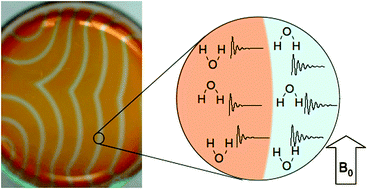Magnetic resonance imaging of chemistry
Abstract
Magnetic resonance imaging (MRI) has long been recognized as one of the most important tools in medical diagnosis and research. However, MRI is also well placed to image chemical reactions and processes, determine the concentration of chemical species, and look at how chemistry couples with environmental factors, such as flow and heterogeneous media. This tutorial review will explain how magnetic resonance imaging works, reviewing its application in chemistry and its ability to directly visualise chemical processes. It will give information on what resolution and contrast are possible, and what chemical and physical parameters can be measured. It will provide examples of the use of MRI to study chemical systems, its application in chemical engineering and the identification of contrast agents for non-clinical applications. A number of studies are presented including investigation of chemical conversion and selectivity in fixed-bed reactors, temperature


 Please wait while we load your content...
Please wait while we load your content...